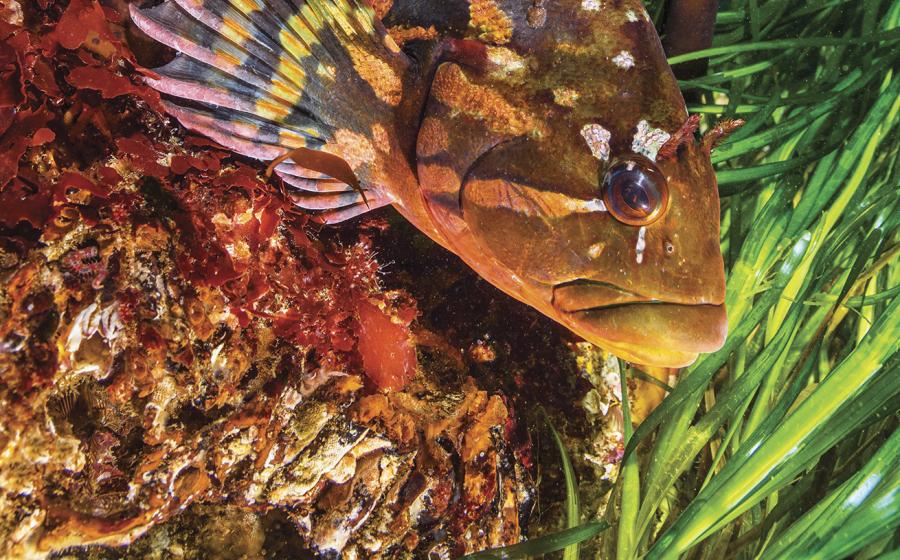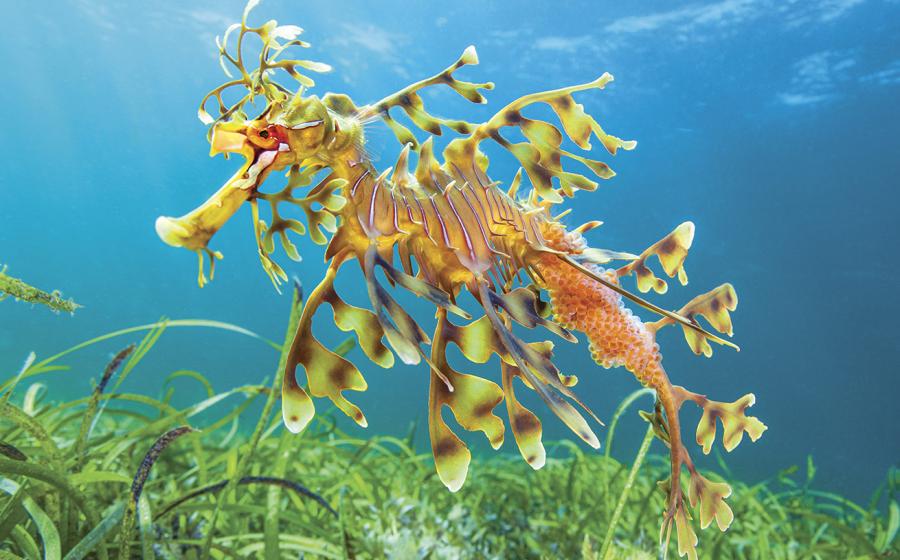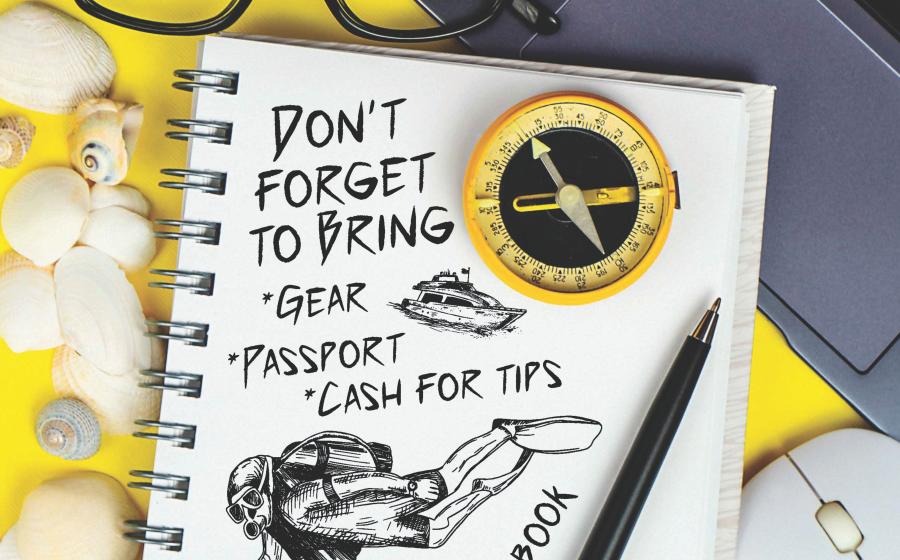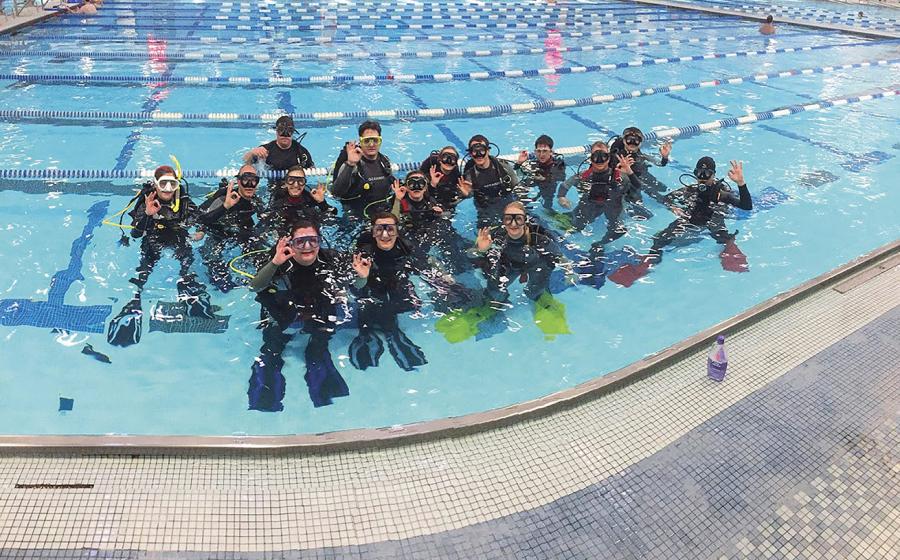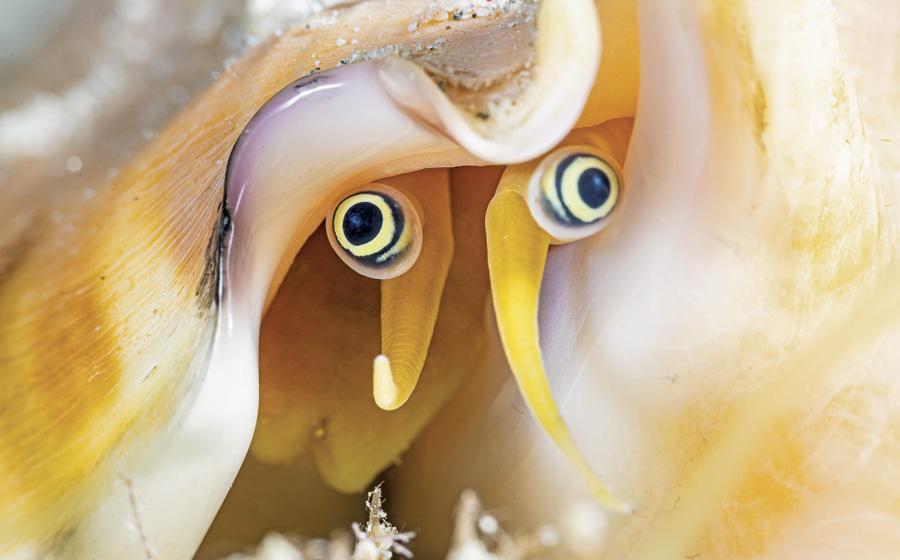SCUBALAB 2014: BC Review
LATEST: 2016 SCUBALAB BC REVIEW
How and why we test BCS:
Our reviews are rooted in objective measurements of raw performance and feedback from test-team divers. Click here to view the Product Features and Objective Test Results, or Download the PDF[1.4mb]
ERGONOMIC TESTS
These are designed to tell you how gear functions during real-world use. Testers equipped with slates dived each and tallied scores on a scale from 5 (excellent) to 1 (poor) in the following categories:
• Assembly
How easy is it to attach to the tank and attach the inflator hose? Do handles and straps make it easy to transport and position the BC on the tank? Are tank-strap adjustments and buckles easy to figure out? Does the BC strap securely?
• Loading Weight System
How easy is it to load weights before donning the BC? Is it easy to load on the surface?
• Comfort and Adjustment
How does the BC feel while attached to a tank — especially in the water? Are there enough vertical and horizontal adjustments? Are there any objects that create discomfort? Is there lumbar support? Does the tank-strap system support the tank properly? At depth, does the BC slip about on the diver’s body?
• Attitude and Stability
In the water, does the BC provide a feeling of control? Is it easy to maintain or change positions while underwater?
• Valve Operation
Is the inflator button intuitive? Is the oral inflator comfortable to use? Is the pull dump effective? Are remote exhaust valves accessible and effective?
• Ascent Control
During a normal ascent, using all available valves, is it easy to maintain buoyancy and control?
• Surface Floating Position
Does the BC ride up? How easy is it to maintain a vertical position?
• Weight-Ditch System
In water, how easy is it to ditch the weight pouches?
• Comments
Divers record their observations on anything noteworthy about their experience with each BC.
OBJECTIVE TESTS
We conduct three tests on each BC to measure function and safety:
• Buoyant Lift
To measure each BC’s maximum buoyancy, we mount it upright on a neutrally buoyant bucket, fully inflate it and add weight to the bucket until it sinks. Notably, every BC we tested met the manufacturer’s stated claim — and several exceeded it.
• Inherent Buoyancy
We test by submerging the BC, and carefully removing all air from cells, pockets, etc., and then add weights in 1⁄4-pound increments until the BC is neutrally buoyant. This is an area where manufacturers have dramatically improved performance in recent years.
• Flow-Rate Test
This is designed to confirm the ability of a BC’s exhaust-valve system to prevent an uncontrolled ascent. In the pool, an empty BC loaded with 20 percent of its stated maximum buoyant lift is held upright, and then the inflator and each of the upper exhaust valves are simultaneously held open for 20 seconds. By industry standards, at least one of the valves should exhaust rapidly enough that the BC remains negatively buoyant.
Looking for more ScubaLab testing? Check out more of our gear reviews:
SCUBALAB 2014: Dive Bag Review
SCUBALAB 2014: Regulator Review
SCUBALAB 2014: BC Review
SCUBALAB 2014: Dive Lights Review
SCUBALAB 2014: Wetsuit Review
SCUBALAB 2013: Fins Review
SCUBALAB 2013: Mask Review
SCUBALAB 2013: Regulator Review
During the BC test in March 2014, the ScubaLab team had a chance to dive the legendary Blue Grotto in Williston, FL. At a depth of nearly 100 feet, it is one of the largest clear-water caverns in Florida — check out our video to the base of the cavern!

Alex BeanToday’s BCs are complex pieces of equipment, with a host of features, capabilities and details. Finding the right one means getting one that fits both you and your style of diving. The models submitted for our evaluation fall into four categories: travel, jacket-style, back-buoyancy and tec. To help you choose the right style, features and details, we dived and tested this year’s class of BCs, then we crunched the numbers. Here’s how they stacked up.

Photo by Carrie Garcia; Inherent Buoyancy Illustration by Monica Alberta
This latest model from Mares shows how manufacturers continue to distill all the best qualities of jacket-style BCs. There’s no leap in technology here, but everything works together to bring out the comfort, stability and practicality divers are looking for in a jacket. Divers liked the fit and adjustability, from the comfortable cummerbund to the easy-adjust buckles that swivel on the shoulder straps. The pockets are large, accessible and useful, even when the BC is well inflated, and the power inflator nestles nicely in your hand. Weight pockets load without fuss, and are secure, unobtrusive, and easy to ditch. Test divers would have liked another couple of D-rings, and perhaps a little more adjustment in the cummerbund overstrap. But altogether, the Prestige 2 MRS+ is a nicely designed and constructed BC. It is our Testers’ Choice for jacket BCs.
Buoyant Lift: 35.9 pounds
Contact: mares.comMSRP: $510

Photo by Carrie Garcia; Inherent Buoyancy Illustration by Monica Alberta
We’ve seen a lot of different designs for weight systems, all trying to strike the sweet spot for simplicity, security and easy ditching. The weight system on the Pro 1000 is one of the best ScubaLab has tested. Rather than sticking the locking mechanism inside the pocket, the Pro 1000 places it outside in a smooth plastic housing where it’s easy for divers to grip and latch. It’s out of the way but easy to access when you need it, and the system latches reliably with a secure “click” and deploys easily. The weight system earned top scores from test divers. Pockets on the Pro 1000, though large, are located a little far back to access easily, and while the power inflator provided good control, the mouthpiece for the oral inflator is small and rock hard. A nice touch is the two-position chest strap, which is easy to move up and down. Overall, our divers rated the Pro 1000 highly for comfort, stability and adjustability.
Buoyant Lift: 33.7 pounds
Contact: seacusa.com
MSRP: $525

Photo by Carrie Garcia; Inherent Buoyancy Illustration by Monica Alberta
The Avid is technically not new, but Sherwood continues to refine the details, this year with easier-to-adjust webbing and new easy-access rear-weight trim pockets. Overall it’s the same comfortable, stable rig that’s earned top marks from divers in the past. The weight pouches are easy to load when wearing the BC, and the ditching handles maintain a nice, tight profile even when the Avid is fully inflated. A really good dual-band tank attachment, a wide range of harness adjustability and a flawless inflation and exhaust-valve system make the Avid comfy, secure and easy to control whether at depth, ascending or on the surface. Here’s one example of the attention to detail that brought the Avid to within a hair of being our Testers’ Choice: Despite the Avid’s size, and the soft, plush back pad that helps make it so comfortable, the BC registered just 3⁄4 pound of inherent buoyancy.
Buoyant Lift: 26.9 pounds
Contact: sherwoodscuba.com
MSRP: $588

Photo by Carrie Garcia; Inherent Buoyancy Illustration by Monica Alberta
The Equator shows how lines continue to blur between BC categories: It’s a full-feature BC, but it has a soft back plate that makes it travel friendly. Our divers found the lack of a rigid back plate in no way compromised the equator’s stability — possibly because the two-strap tank attachment worked so well — and they rated the BC highly for control and comfort, at depth and on the surface. The adjustment system, particularly the swiveling shoulder-strap buckles, makes for a very comfortable ride. Divers also liked the numerous well-placed D-rings and large, convenient dump-valve handles. Test divers also liked the weight-pocket system, which uses low-profile buckles — you’re unlikely to accidentally release the equator’s weights — but they wished the system was easier to ditch. The Equator has a lot to offer for divers seeking a full-feature jacket that can still be folded into a suitcase.
Buoyant Lift: 29.2 pounds
Contact: scubapro.com
MSRP: $539

Photo by Carrie Garcia; Inherent Buoyancy Illustration by Monica Alberta
Zeagle calls this an “ultracompact” BC, and we won’t argue. It weighs less than 4 pounds, and its soft design lets you roll it up it up like a newspaper. Squeezed flat, it looks more like some sort of vintage undergarment than a BC. But snug it down on a tank, and you might be as delighted as we were at how stable and comfortable it is. The corsetlike lower harness, double tank bands, lightly padded shoulder straps, and two-position chest strap work together so well that our divers gave the Covert top scores in stability, attitude and ascent-control ratings. The ditchable weight pockets hold up to 16 pounds and conveniently load from the top. The bladder, restrained by an elastic mesh fabric, provides 32 pounds of lift. You won’t find pockets or much in the way of D-rings on the Covert, and some divers wished for an additional or relocated lower exhaust valve. But the best minimalist designs give you just what you really need, and the Covert does that exceptionally well.
Buoyant Lift: 32 pounds
Contact: zeagle.com
MSRP: $429.95

Photo by Carrie Garcia; Inherent Buoyancy Illustration by Monica Alberta
If you’re looking for a modestly priced travel BC with a boatload of lift, your search is over. The Levo’s huge back bladder provides a whopping 56 pounds of lift—performance more in line with tec gear than the typical travel BC. But the Levo is clearly aimed for travel or everyday diving, with a basic but sturdy and comfortable harness, and a pair of D-rings on the shoulder straps. Divers rated the Levo very good for stability and com- fort, and appreciated touches like the right-shoulder exhaust valve. Considering its jumbo lift capability, the Levo also needs top-notch exhaust valving, and it delivers — it easily aced our flow-rate test. One omission we missed, especially in a travel-oriented BC capable of everyday use, was integrated weights. The Levo’s weight pockets, which cinch up with snap buckles, aren’t designed to be ditchable. Otherwise we found a lot to like about the Levo, including its price; it was the only BC we tested that’s priced under $400.
Buoyant Lift: 56 pounds
Contact: subgear.com
MSRP: $379

Photo by Carrie Garcia; Inherent Buoyancy Illustration by Monica Alberta
Dive Rite is known for its tec and cave gear, and that heritage shows in the VoyagerPac, with its heavy webbing, stainless hardware and rugged doughnut bladder. The VoyagerPac is designed for divers using more than 10 pounds of weight (Dive Rite’s TravelPac has 25 pounds of lift). As expected for a tec-inspired rig, fine-tuning the harness requires fiddling with an assortment of retainers, but your reward is a stable, well-balanced ride. The bladder concentrates buoyancy toward the hips, and gives the VoyagerPac a trim profile. Divers appreciated the well-placed stainless D-rings, and considered the roller-buckle tank attachment one of the best. One rap divers had was the tiny pull handle on the rear exhaust valve. Despite its beefy construction, the VoyagerPac will lie flat in a suitcase, and it’s worth consideration if you’re seek- ing a reasonably priced but rugged, wing-style BC that can travel well.
Buoyant Lift: 35 pounds
Contact: diverite.com
MSRP: $440

Photo by Carrie Garcia; Inherent Buoyancy Illustration by Monica Alberta
The restyled Travelight has updates including a new inflator and weight system, but here’s what hasn’t changed: It still offers enough stability, comfort and amenities that it’s easy to forget it’s not a full-feature jacket BC with a rigid back plate. It earned high marks for its secure but easy-ditch weight system and its stability. Divers appreciated details you don’t always find on travel BCs, like no-fuss trim pockets, 10 alloy D-rings, and a right-shoulder exhaust with a pull handle that, as with the lower-right valve, is nicely routed to the front of the BC. The Travelight weighs in at just 6 pounds and folds up for packing. Despite being on the lower end of the price range in this grouping, it very nearly won a Testers’ Choice, and could have done a credible job competing against full-feature jacket BCs you wouldn’t want to try squeezing into your suitcase. For that, we named the Travelight our Best Buy.
Buoyant Lift: 20.2 pounds
Contact: cressiusa.com
MSRP: $425.95

Photo by Carrie Garcia; Inherent Buoyancy Illustration by Monica Alberta
The Jetpack aims to meet all of a traveling diver’s needs, with a compact BC with 30 pounds of lift that buckles up to a semidry backpack holding what you need for a few days of travel and diving. We stuffed in travel fins, a 1 mm wet-suit, regs, mask, etc., and had room for clothes and toiletries. Because of its dual purposes, the jetpack has a fair number of buckles and straps. The one-size-fits-all BC has a good range of adjustability, but some divers felt that the waist overstrap needed more adjustability. That might be why they reported a bit of tank wobble. Possibly because of its well-cushioned back pad, we also measured more inherent buoyancy in the jetpack than other BCs — only about 2 pounds, but enough that divers noticed. Divers liked the jetpack’s easy-load ditchable weight pockets, which hold up to 14 pounds, and rated it good for comfort and floating position. For divers looking to corral all their dive gear into the overhead bin, the jetpack offers a solution.
Buoyant Lift: 34 pounds
Contact: diveaeris.com
MSRP: $599.95

Photo by Carrie Garcia; Inherent Buoyancy Illustration by Monica Alberta
Part of Apeks’ line of tec-oriented wing systems, the model we tested was built around a new ultralight travel plate, 18-pound-lift single tank doughnut, one-piece harness and SureLock weight system. You’ll need a bit of patience to adjust the harness and serrated retainers. Fortunately you need to fiddle with that only once, and the payoff is a rock-solid platform that earned top scores. Divers praised it for stability and comfort, rugged construction, a great tank-strap system, well-placed D-rings and flawless valve operation. The weight system — which divers rated “excellent” — holds up to 20 pounds. You’ll pay for all this performance. While the WTX mashes flat enough to fit inside a suitcase, it’s less compact and weighs a little more — and costs quite a bit more — than many other travel BCs. But you also have the ability to easily change components, such as a larger air cell for more tec-heavy use. For its performance and flexibility, the WTX is our Testers’ Choice for travel BCs.
Buoyant Lift: 18 pounds
Contact: **aqualung.com
**MSRP: $750

Carrie Garcia
Tusa’s first BC compatible with twin tanks, the Imprex Power Pro combines tec capabilities with rec comfort and ease of operation. We tried it in single-tank configuration, and found it comfy and stable, with a padded aluminum back plate, well-positioned dump valves and a nicely ergonomic power inflator. You won’t fit much in the pockets, but you get eight hefty stainless D-rings. The integrated-weight locks cleverly display a tab marked “Locked” when in place and are very secure, but require a manly tug to ditch. The huge rear air cell, tamed by compression bungees, provides 67 pounds of lift.
Buoyant Lift: 67 pounds
Contact: tusa.com
MSRP: $699

Carrie Garcia
The original Atmos was a favorite, and the latest update has kept what we liked about it while adding refinements. We didn’t get the new version in time to conduct a full test, but we got a chance to take the Atmos HD out for spin, and liked what we found. It still has a hybrid air cell that concentrates most lift in the back, but it also puts some along the sides for surface stability while keeping things nicely uncluttered on the chest and sides. New stuff includes updated weight pockets rated for up to 20 pounds and a heavier ballistic fabric that gives the Atmos a more tec-oriented look and feel. We look forward to putting the Atmos HD through our full test.
Buoyant Lift: 38 pounds
Contact: diveaeris.com
MSRP: $529.95

Carrie Garcia
Seac developed the Icaro 2000 by taking its existing Icaro, shaving off weight, swapping for a smaller bladder, and developing a one-size-fits-all adjustable harness. Otherwise, the Icaro 2000 is a lot like the original, with a padded aluminum back plate and harness supporting a wing air cell that stands off enough so it won’t interfere with a diver’s freedom of motion (and giving it a spacewalker sort of look). The cell is well protected by a rugged cover and has three remote exhausts. Because the backplate is compact and the air cell compresses to a small package, the Icaro 2000 will pack into a surprisingly small space.
Buoyant Lift: 35 pounds
Contact: seacusa.com
MSRP: $789

Carrie Garcia
The WTX line of components lets you create your own single-tank wing BC from a choice of back plates, doughnut air cells, integrated-weight pockets and harnesses. A favorite: the WTX harness ($375) with a 5-pound stainless back plate ($185), weight pockets ($145), and a 40-pound doughnut in the Armoguard version ($440), which has a nonabsorbent, rubbery cover designed for public- safety divers. Call it spendy, but it’s also super comfortable, stable and flexible — and makes you look like your next dive trip might be to some North Korean military harbor.
Buoyant Lift: 18-40 pounds
Contact: apeks.co.uk
MSRP: Varies according to components

Carrie Garcia
IST’s side-mount is designed for cold-water diving, with 42 pounds of lift (for warm-water techies, IST also offers its new SMB-21). The SMB42 has a flattish, streamlined bladder with a smooth top that maintains a low profile. The upper harness is minimal and open in the chest area, so it won’t interfere with maneuverability. Both exhaust and inflator are routed to the bottom center of the bladder just over the kidneys, which keeps things tidy but can make it a little tough to exhaust that very last puff. The adjustable butt plate has long stainless rails for easy snap attachment, and two sets of bottle rigging are included, with tank bungees, tank bands, and tank webbing with snaps.
Buoyant Lift: 42 pounds
Contact: istsports.com
MSRP: $750 (including tank rigging)

Carrie Garcia
Its name suggests the new SMS75 side-mount lands in the middle between Hollis’ top-tec SMS100 and its lightweight SMS50. But the SMS75 leans more toward the hard-core open-water tec or cave diver, with many of the features that Hollis has refined into its side-mounts over years of experience. The pear-shaped bladder does a good job concentrating lift at the hips. Catering to tec divers’ penchant for customization, the inflator and dump valves can be reversed at top or bottom, and the top plate allows for single or double rear-mounted tanks — one of the well-executed features that makes this a very capable, flexible rig.
Buoyant Lift: 35 pounds
Contact: hollis.com
MSRP: $629.95 (includes tank rigging kit)
LATEST: 2016 SCUBALAB BC REVIEW
How and why we test BCS:
Our reviews are rooted in objective measurements of raw performance and feedback from test-team divers. Click here to view the Product Features and Objective Test Results, or Download the PDF[1.4mb]
ERGONOMIC TESTS
These are designed to tell you how gear functions during real-world use. Testers equipped with slates dived each and tallied scores on a scale from 5 (excellent) to 1 (poor) in the following categories:
• Assembly
How easy is it to attach to the tank and attach the inflator hose? Do handles and straps make it easy to transport and position the BC on the tank? Are tank-strap adjustments and buckles easy to figure out? Does the BC strap securely?
• Loading Weight System
How easy is it to load weights before donning the BC? Is it easy to load on the surface?
• Comfort and Adjustment
How does the BC feel while attached to a tank — especially in the water? Are there enough vertical and horizontal adjustments? Are there any objects that create discomfort? Is there lumbar support? Does the tank-strap system support the tank properly? At depth, does the BC slip about on the diver’s body?
• Attitude and Stability
In the water, does the BC provide a feeling of control? Is it easy to maintain or change positions while underwater?
• Valve Operation
Is the inflator button intuitive? Is the oral inflator comfortable to use? Is the pull dump effective? Are remote exhaust valves accessible and effective?
• Ascent Control
During a normal ascent, using all available valves, is it easy to maintain buoyancy and control?
• Surface Floating Position
Does the BC ride up? How easy is it to maintain a vertical position?
• Weight-Ditch System
In water, how easy is it to ditch the weight pouches?
• Comments
Divers record their observations on anything noteworthy about their experience with each BC.
OBJECTIVE TESTS
We conduct three tests on each BC to measure function and safety:
• Buoyant Lift
To measure each BC’s maximum buoyancy, we mount it upright on a neutrally buoyant bucket, fully inflate it and add weight to the bucket until it sinks. Notably, every BC we tested met the manufacturer’s stated claim — and several exceeded it.
• Inherent Buoyancy
We test by submerging the BC, and carefully removing all air from cells, pockets, etc., and then add weights in 1⁄4-pound increments until the BC is neutrally buoyant. This is an area where manufacturers have dramatically improved performance in recent years.
• Flow-Rate Test
This is designed to confirm the ability of a BC’s exhaust-valve system to prevent an uncontrolled ascent. In the pool, an empty BC loaded with 20 percent of its stated maximum buoyant lift is held upright, and then the inflator and each of the upper exhaust valves are simultaneously held open for 20 seconds. By industry standards, at least one of the valves should exhaust rapidly enough that the BC remains negatively buoyant.
Looking for more ScubaLab testing? Check out more of our gear reviews:
SCUBALAB 2014: Dive Bag Review
SCUBALAB 2014: Regulator Review
SCUBALAB 2014: BC Review
SCUBALAB 2014: Dive Lights Review
SCUBALAB 2014: Wetsuit Review
SCUBALAB 2013: Fins Review
SCUBALAB 2013: Mask Review
SCUBALAB 2013: Regulator Review
During the BC test in March 2014, the ScubaLab team had a chance to dive the legendary Blue Grotto in Williston, FL. At a depth of nearly 100 feet, it is one of the largest clear-water caverns in Florida — check out our video to the base of the cavern!






